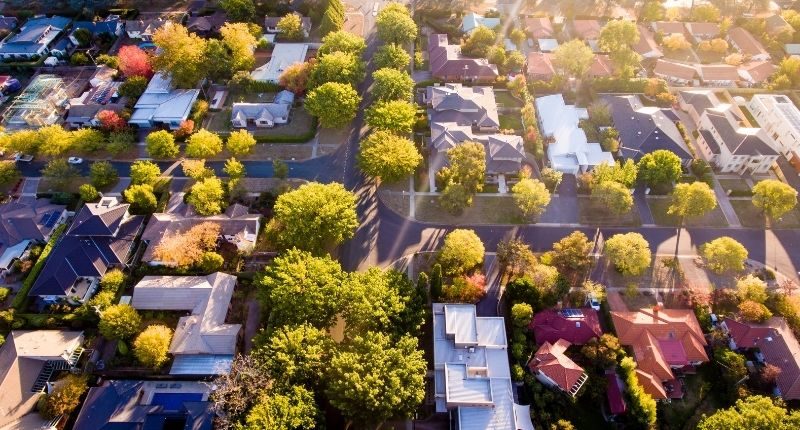- While house prices fell -8.38% between October 2017 and June 2019, the recent price fall of -8.40% has occurred in just nine months
- Sydney, Melbourne and Brisbane all recorded large declines
- Prices have fallen by less than 1% in Perth
Data released by CoreLogic today has confirmed that Australian home values have officially recorded their largest-ever decline on record.
The CoreLogic Daily Home Value Index (HVI) recorded a decline of -8.40% as of 7 January this year. This follows the peak on 7 May 2022.
This breaks the record of -8.38%, which occurred between October 2017 and June 2019.
However, while that downturn lasted 20 months, this price fall occurred in less than nine months.
Why have house prices fallen this much?
CoreLogic’s Eliza Owen said the recent cycle of rate hikes had driven the home value falls. The cash rate has risen by 300-basis points in just eight months.
This has resulted in a steep reduction in borrowing capacity. Higher interest costs are also dissuading potential buyers.
“Australians are also more indebted today than through historic periods of rate rises, with the latest Reserve Bank of Australia’s estimate of housing debt-to-income ratio sitting at 188.5%,” said Ms Owen.
“A decade ago this figure was 162.0% and in 2002 the ratio was 130.2%. Higher household indebtedness may have increased the sensitivity of housing values to interest rate rises.”
Eliza Owen, CoreLogic

Household savings have also been eroded thanks to higher inflationary pressures along with a post-lockdown surge in spending. This is reflected by the fact that there is low consumer sentiment; data shows this is at near-recessionary levels.
“Softer housing demand may also reflect Australia’s ‘hangover’ from the elevated sales and listings activity through the 2021 boom, when an estimated 619,531 transactions occurred over the calendar year,” she added.
“It was the highest volume of housing sales in more than 18 years. Fuelled by record-low interest rates and stimulus such as HomeBuilder and low-deposit home loan schemes, may have brought forward many buying and selling decisions through the pandemic, resulting in less transaction activity in subsequent years.”
Sydney, Melbourne and Brisbane leading the way
The bulk of this downturn is being led by the three largest capital cities.
Sydney has recorded a -13% peak-to-trough decline, with Brisbane home values falling by -10% and -8.6% in Melbourne.
Perth home values have only fallen by less than 1% since August.
“For perspective, the -8.4% drop has come off a high base. The sharp decline in dwelling values follows an upswing of 28.9% between September 2020 and May 2022, which was the fastest rise in home values nationally on record,” added Ms Owen.
“The fall in national home values may be the largest peak-to-trough decline on record, but at the end of 2022 home values were still 16.0% higher than they were five years ago, and 59.8% higher than they were 10 years ago.”
Rising interest rates typically account for price declines
Ms Owen noted that most of the previous housing market downturns in Australia have been caused by rising interest rates.
For example, the early 90s and early 90s were known for high inflation and subsequently high interest rates. In the 1990s, the cash rate hit 17.5%.
Unlike this time, however, these two periods were known for high unemployment. During the Hawke and Keating-era “Recession We Had to Have”, unemployment reached 11%. Excluding the early days of the pandemic, Australia has not experienced this high since the Great Depression. Given high levels of unemployment, buyer demand was low.
Ms Owen noted that the 2017-2019 housing market decline was not associated with a lift in the cash rate; this was due to higher lending standards.
“The Australian Prudential Regulation Authority (APRA) introduced several temporary restrictions to mortgage lending that coincided with falls in market values. This was in response to an unusually high level of home lending for investment purposes, along with high rates of interest only lending,” explained Ms Owen.
“Temporary tightening policies from APRA included a 7% floor for mortgage serviceability assessment, a 10% growth benchmark for investment housing lending, and the limitation of interest-only lending to 30% of new housing credit.”
APRA, in 2021, also introduced new serviceability requirements.
So, what’s next for the Australian housing market?
Ms Owen said that over the coming months, housing market conditions are generally expected to remain soft.
“The underlying cash rate is likely to see further increases in 2023, with market expectations pricing a peak of around 4%, while the median forecast from Australian economists is lower at 3.6%.
“Ongoing increases in interest rates will further erode the borrowing capacity, and likely prolong the country’s housing downturn until interest rates stabilise.”








